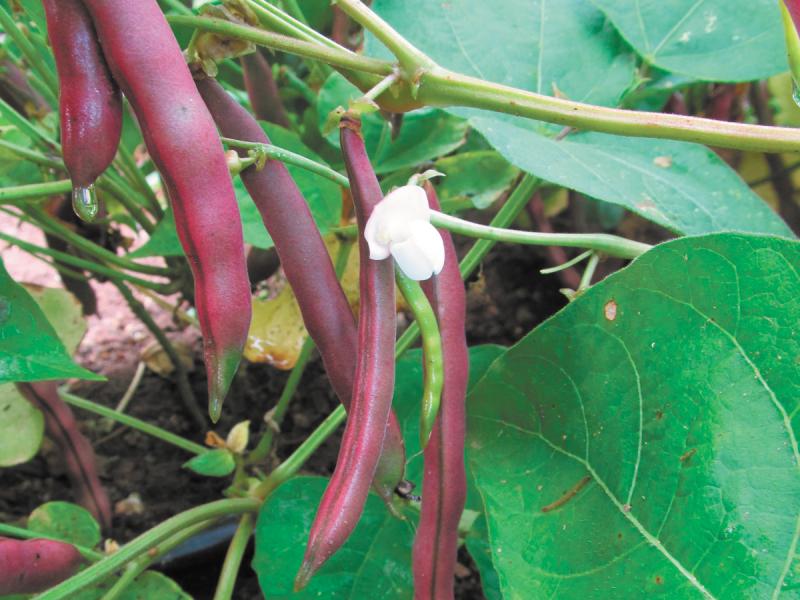Think of swans, and you probably think grace and gentleness. But these gentle giants are among the largest flying birds, able to fly 60 miles per hour. The male swan is called a cob, and a female is a pen. Baby swans are cygnets, and a group of flying swans is a wedge.
While few of us can house a herd of swans (yes, they are called herds as well as flocks), we can grow swans in the garden.
Red Swan beans (Phaseolus vulgaris, variety Red Swan) have striking, pale-red, flat pods on short, compact plants. The four- to five-inch-long flat beans are similar to the famous Italian Romano beans, with just as much flavor. Even the flowers are beautiful, delicate bicolor pink and white. In fact, these beans can do double duty as an edible ornamental in the flower bed. Served raw with dips, Red Swan bush beans add a colorful addition to the table. The beans will turn bright green when cooked.
Red Swan beans are amazingly prolific, pumping out crops of beans in just 60 days. Because they will grow and produce beans in about two months, Red Swan bush beans are ideal for planting in midsummer for a harvest later in the season.
For best results, plant in full sun after all danger of frost has passed and the ground has heated up. Red Swan bush bean seeds are often available at local nurseries and garden centers, or by mail from Vermont Bean Seed Company (www.vermontbean.com or phone 800-349-1071), or Sand Hill Preservation (www.sandhillpreservation.com).
Treat your Red Swan bean seeds and all bean and pea seeds with a garden inoculant. This is a safe bacterium that lives on the roots of legumes and helps in the growth and production of beans, peas and peanuts. These bacteria will actively take atmospheric nitrogen and change it into a usable fertilizer for the bean plant. Sow your Red Swan beans and they will not only provide their own fertilizer but will leave a lot of nitrogen in the soil for later crops.
Ideal soil pH is between 5.8 and 6.5. Plant the seeds an inch deep, four inches apart in rows two to three feet apart. Red Swan seeds will germinate in six to 10 days. Bean seeds might rot in cold, damp soil, so be prepared to replant them. To stop disease, be sure you keep good air flow between the plants, and try not to water overhead and get the leaves wet.
It is important to keep Red Swan bush beans picked regularly, because seed formation slows down and eventually stops production. Sow these beans every 10 to 15 days right up until two months before your first frost, and you will enjoy aconstant supply of these delicious beans.
You can save your own seeds by just letting the pods stay on the plant until they are dry and brittle Bean seeds will stay viable for two to three years in storage.
Plant Red Swan beans now and you will have some of the brightest, most colorful beans in just two months. Otherwise, it may be the garden's swan song.





















































